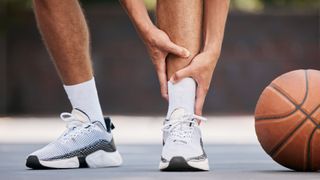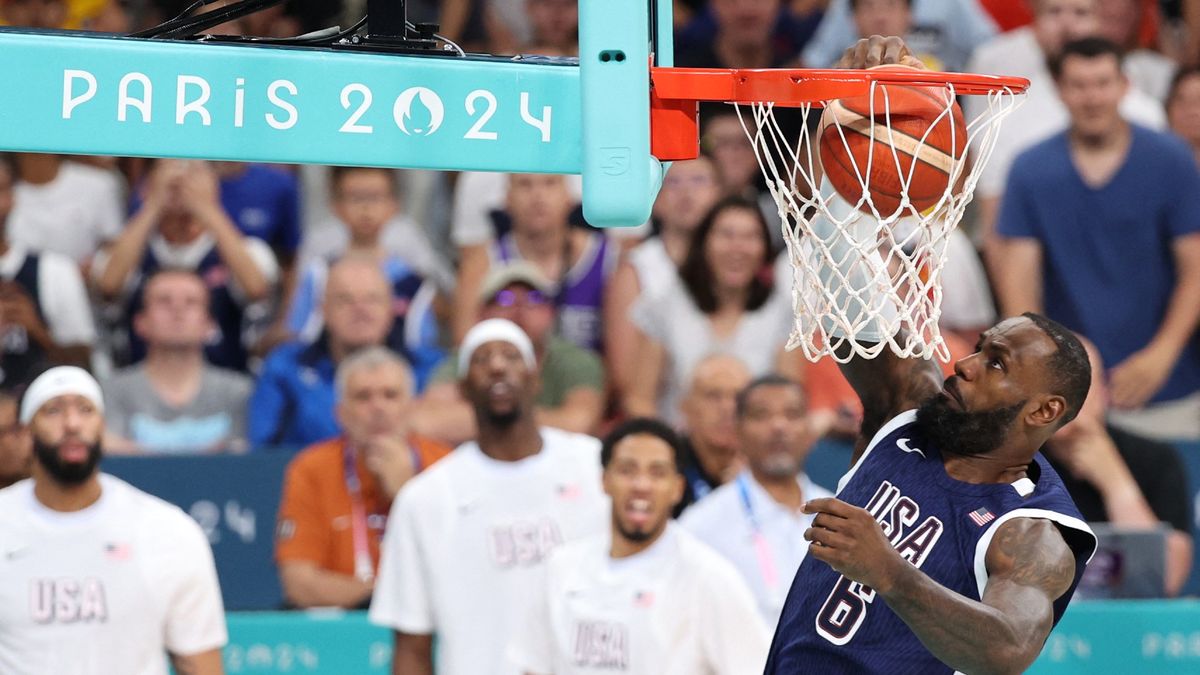Behind every Olympian is an ensemble of coaches, physiotherapists, nutritionists and doctors who help keep the athlete on top of their game.
In particular, physicians at a major international competition face a unique set of challenges — such as quickly responding to injuries mid-event and supporting athletes’ recovery afterward.
Dr. Thomas Kremen is one of the physicians currently at the 2024 Paris Olympics supporting the USA Basketball men’s team. The job involves caring for a roster of the world’s most famous basketball players, including Stephen Curry, LeBron James and Anthony Edwards.
Kremen is an orthopedic surgeon and sports medicine specialist at University of California, Los Angeles (UCLA) Health, as well as a former collegiate competitive swimmer. Before supporting USA Basketball, Kremen worked as a physician with USA Swimming for 10 years, traveling with the team to the Tokyo Games. He works with UCLA intercollegiate athletics, as well as the Los Angeles Lakers basketball team and Los Angeles Chargers football team.
Live Science spoke with Kremen about what it is like to be a doctor at the Olympics, how physicians like himself prepare for the Games and what he is most looking forward to in Paris.
Related: ‘Simone is a very, very rare bird’: Experts discuss the science behind Simone Biles’ gymnastic prowess
EC: How is it decided which team you’re going to be working with?
TK: That’s a complex question, but I think it’s sort of partly availability, partly experience.
From swimming, obviously, I had had a longitudinal relationship with them, and leading up to the Tokyo Olympics I had several international games that I had traveled with the team as sort of a preparation to make sure that, for all the things we organized for each of these Games, we put it into practice about one year prior to the Games. Just to work out the kinks and make sure we have all the various details optimized.
In 2019, in preparation for the planned 2020 Games, we had traveled to World Championships together with the exact same medical team — so athletic trainers, massage therapists, chiropractors, performance staff, strength and conditioning people, as well as our team of doctors, which was myself, as well as a primary care physician.
For the COVID year, obviously, there was a lot of tweaking because a lot of restrictions came in, and the Games were postponed for a year. But very similar to that, for the USA Basketball games last summer, we participated in the FIBA World Cup in Manila with the same medical infrastructure, just to kind of be prepared for these Games this year.
Related: What’s the heaviest weight a person can lift?
EC: How do you prepare players for their games?
TK: There’s a couple elements there — there’s certainly, “How does the medical team prepare for these big international competitions that are obviously high profile?” And then, “How do the players prepare?”
As a physician, I’m less involved in their day-to-day preparation and more [involved] in making sure that we strategize how we would deal with anything that could come up.
So, the players are used to dealing with keeping themselves in shape and ready for competition. And there’s a whole team of players … a whole lot of things that go into making sure that they’re actually ready to perform at the highest, highest, elite level. And everyone wants to be bigger, better, faster, stronger. And these athletes are used to doing that day in and day out. So for them, it’s almost like continuing on their — I don’t want to say day-to-day — but their high, high level, day-to-day elite performance.
From the medical standpoint, we’re just always trying to make sure that we have whatever medical resources we could need readily available, so that we can take care of any potential common medical problems, or those rare but more concerning medical problems. We can take care of them expeditiously so that the athletes have the opportunity to perform and do what they need to do.
EC: What are the most common kinds of injuries that you see in these athletes, and how do you treat them?
TK: Yeah, it’s not all that mysterious, to be honest. I mean, you’ve seen basketball players.
Common injuries are like muscle strains and ankle sprains, and that sort of thing are the vast majority of the injuries. And so these players have obviously been playing this sport since they were children, and they’ve all had these injuries over time. And so those are not particularly new, but you still have to deal with them and their unpredictability to some extent.
So the common things are still common, even at the Olympic level or the school collegiate level.
Although some people may not consider basketball a contact sport, it is still a contact sport because the players are jumping and landing. So a lot of bruises from hitting your elbow on the court when you go up for a layup and can’t land perfectly. And there’s bruises from hitting the floor, jumping and landing injuries and things like tendonitis, or something gets flared up — ankle sprains, muscle sprains, that kind of thing.
Related: What’s the most dangerous sport in the world?

EC: What would you say is the most rewarding part of your job?
TK: It’s always great to be able to empower athletes to demonstrate their amazing, amazing skill. And one of the reasons why these athletes are so famous is because their performance level is unbelievable and very, very impressive.
So as a former athlete — albeit at a much, much less level than these particular athletes — but after being an athlete, you always want to be able to let people participate in and put all their hard work to use or to showcase that. And so with these guys, it’s great to be able to make sure that they can perform at the best of their ability. And then when you add in the [Summer] Olympic Games, which happens once every four years, and representing our country on top of just the sports in general, it’s even that much more special.
EC: What are you most looking forward to about working at the Olympic Games?
TK: Seeing all these different people from extremely different backgrounds. In some cases, you know, some countries are very resource-rich and have a lot of different opportunities at their disposal; other countries may not. But when you get onto the basketball court, none of that matters, you know, and it’s kind of an amazing equalizer.
The other thing I think is amazing is —- you know, I’m at a major university where we’re always trying to improve how we deliver healthcare to everyone, not just elite professional basketball athletes, but really everybody. And so using these things we learn to make the athletes bigger, better, faster, stronger, like everyone’s trying to get to in this elite level — taking those lessons and using that to be innovative at the treatment of our day-to-day patients at UCLA is something that I think is what you always try to have in the back of your mind.
Editor’s Note: This interview has been condensed and edited for clarity.
Ever wonder why some people build muscle more easily than others or why freckles come out in the sun? Send us your questions about how the human body works to community@livescience.com with the subject line “Health Desk Q,” and you may see your question answered on the website!





















Discussion about this post